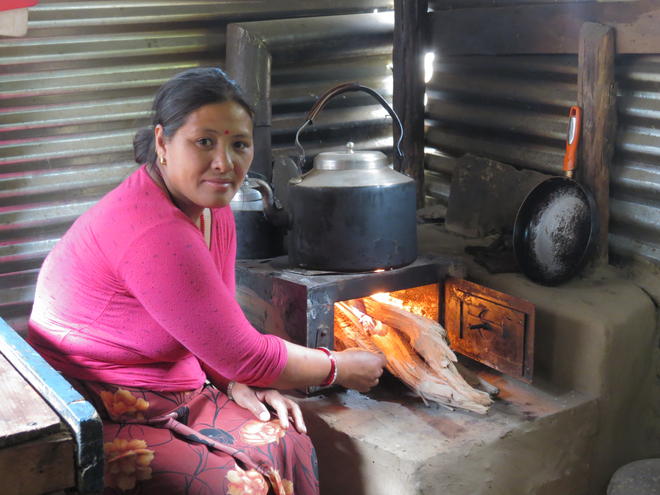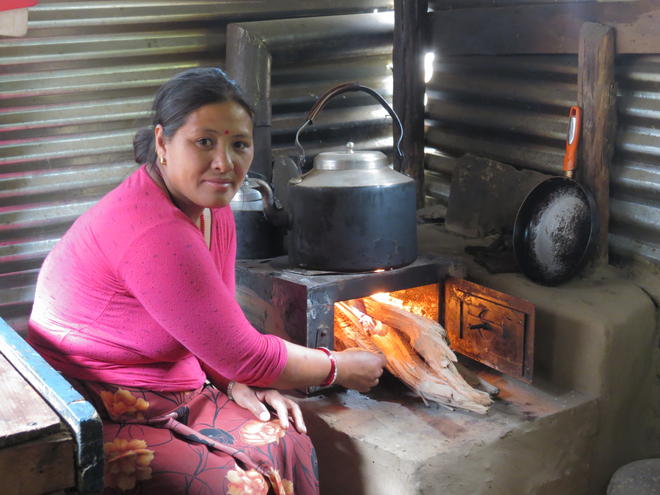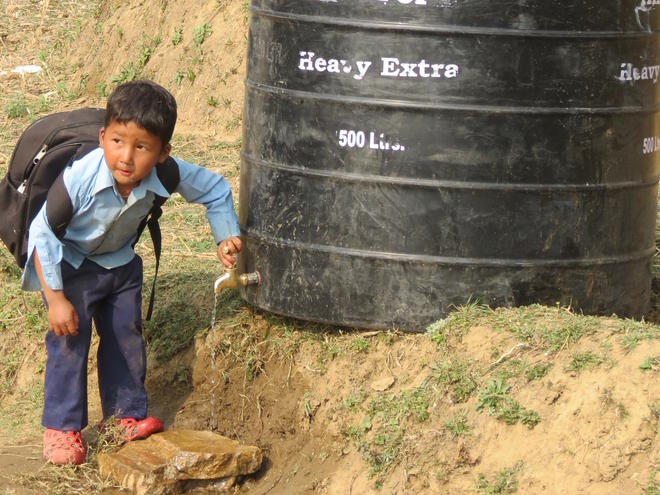In Nepal, cook stoves improve lives and help the environment
Published by the World Wildlife Fund
With USAID support, Hariyo Ban generated:
- 24,039 improved cook stoves, including 4,724 as part of recovery from the 2015 earthquake
- Repair of six micro-hydro plants following the earthquake
- Repair or reconstruction of nearly 116 miles of trails following the earthquake
- Safe drinking water and sanitation for 28 schools following the earthquake
- Repair of 70 drinking water systems and 55 irrigation systems
- Cash-for-work reconstruction schemes that employed 16,651 lower-income people
- Training for more than 1,000 people in environmentally sound recovery and reconstruction
- Overall, more than 106,000 earthquake-affected people benefitted from the Hariyo Ban’s recovery work including women, children, and indigenous communities.
Women in Nepal used to walk to the forest to collect loads of heavy firewood for cooking. The task itself was burdensome, and the resulting smoke from the fires they built at home often caused respiratory problems. But forests, too, felt the impact: firewood collection is one of the main causes of forest degradation in the country, affecting biodiversity and reducing the ability of forests to protect people from landslides and floods.
That’s why WWF and partners—including CARE Nepal, Federation of Community Forest Users Nepal, and National Trust for Nature Conservation—launched a program to reduce pressure on forests and improve the lives of women and marginalized people through projects such as providing cook stoves that burn firewood more efficiently. Hariyo Ban—a name short for a Nepali saying that means “Healthy green forests are the wealth of Nepal”—is a USAID-funded program that aims to increase the resilience of communities and ecosystems in two large landscapes in Nepal that cover approximately 40 percent of the country, from Himalayan peaks down through the mid-hills to nearly sea-level plains.
Since the improved stoves have chimneys that vent to the outside, women and young children no longer need to breathe in smoke in kitchens. The stoves installed at higher altitudes are made of metal, so they also provide warmth in the cold climate.In Barpak, the community reports that with the improved cook stoves, people now need much less firewood—an impressive decline that’s helping the degraded forest to recover, provide clean drinking water, and reduce the risk of landslides in the steep terrain. The women now have more time and energy for household chores, agriculture, and community activities, including managing community forests.
“Improved cook stoves have greatly reduced our drudgery as well as respiratory infections,” said Ghamrani Ghale, treasurer of the Ragar Community Forest Users Group in Barpak, a community at the foot of the snow-covered Manaslu range. “Now women don’t have to go to the forest so often to collect heavy loads of firewood, or breathe in smoke in our kitchens.”
Cook stoves provide relief
Barpak was at the epicenter of the devastating and tragic earthquake that struck Nepal in April 2015. The earthquake destroyed or damaged nearly all the traditional stone houses and people were forced to seek shelter outside. Some people managed to retrieve their metal stoves from the ruins of their homes and use them in the makeshift shelters for cooking and warmth.
The Hariyo Ban program diverted some of its resources to earthquake relief, and USAID provided additional resources to support work on longer-term recovery and reconstruction, promoting environmentally sound recovery practices. Hariyo Ban supported reconstruction of trails, helping to re-establish links connecting remote mountain communities with family, friends and markets, and providing access for reconstruction materials—including stoves, an important part of ‘winterization’ for earthquake-affected people still sheltering outside at high altitudes. Thanks to USAID’s support, more than 1,200 of the 1,470 households in Barpak have improved cook stoves. In March 2016, Barpak was declared by the local government to be “kitchen smoke free”—a major achievement considering everything the community experienced.
Read the full article at: http://feedproxy.google.com/~r/WWFStories/~3/nTEC9mCY0MI/in-nepal-cook-stoves-improve-lives-and-help-the-environment




